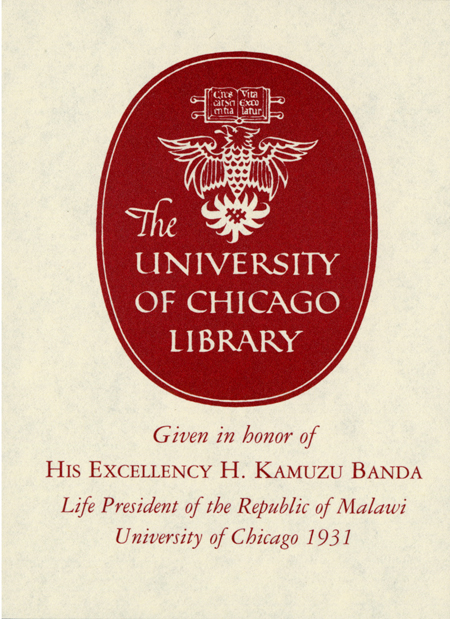Higher education in Ethiopia : themes and issues from an African perspective /
Saved in:
| Author / Creator: | Wondwosen Tamrat, author. |
|---|---|
| Imprint: | Leiden ; Boston : Brill, [2022] |
| Description: | ix, 247 pages ; 25 cm. |
| Language: | English |
| Series: | Global perspectives on higher education ; volume 52 Global perspectives on higher education ; v. 52. |
| Subject: | |
| Format: | Print Book |
| URL for this record: | http://pi.lib.uchicago.edu/1001/cat/bib/12739763 |
Table of Contents:
- Preface
- Series Editors' Preface
- Acknowledgements
- List of Acronyms
- About the Author
- Introduction
- Part 1. Access and Equity
- 1. Linking Female Students' Access to Success
- 2. Gender Parity and the Leaking Pipeline
- 3. Disability in Higher Education: From Policy to Practice
- 4. Responding to the Needs of Eritrean Refugees in Ethiopia
- 5. A New Refugee Law: Implications for Higher Education
- 6. Closing the Gender Gap in Higher Education Leadership
- 7. Perpetuating Inequity Despite Higher Education Expansion
- Part 2. HE Governance and Management
- 8. Government-University Relations: A Troubled Marriage
- 9. The Shifting Sands of University Management in Ethiopia
- 10. Do Students Have a Say in University Governance?
- 11. University Boards: Visibility, Efficiency and Accountability
- 12. Towards More Achievable University Vision Statements
- 13. What Next for a Partially Differentiated Higher Education System?
- Part 3. University Systems and Resources
- 14. HE Financing Reforms: Intentions and Realities
- 15. Challenges of Ensuring Quality Education
- 16. Towards a Uniform System of Academic Promotion
- 17. Imperatives for a Functioning Information System at HEIS
- 18. University Resources: Imperatives for Efficient Utilization
- 19. Unlocking the Potential of ICT in Higher Education
- Part 4. Private Higher Education and Privatization
- 20. Emerging Contours of African Private Higher Education
- 21. Unusual in Growth and Composition: Ethiopian Private Higher Education
- 22. Family Owned PHEIS in Africa
- 23. African Private Higher Education: Progressive Policies and Ambivalent Stances
- 24. Overcoming the Public-Private Divide in HE Law
- 25. Perils of Unregulated Privatization in Public Universities
- 26. Improving the Knowledge Base on Private Higher Education
- Part 5. Quality Assurance in Higher Education
- 27. Towards a Diversified System of Quality Assurance
- 28. Beyond the Establishment of Quality Assurance Agencies
- 29. Internal Quality Assurance: Key to Maintaining Quality
- 30. From Gate Keepers to Gate Crashers: Corruption among University Faculty
- 31. The Scourge of Unscrupulous Private HE Institutions
- 32. Academic Credential Fraud: In Search of Lasting Solutions
- Part 6. Internationalization of Higher Education
- 33. Disparities and Parallels in Internationalization: The Ethiopian Experience
- 34. Medical Education and the Ethiopian Exodus of Talent
- 35. Foreign HE Outposts: Navigating Risks and Opportunities
- 36. Foreign Qualification and Credential Evaluation
- 37. Cross-Border Higher Education: Regulating the Benefits and Risks
- 38. The Challenges of Attracting and Retaining Foreign Faculty
- 39. Internationalization Now a Deliberate Undertaking
- Part 7. Research and Outreach
- 40. Towards a More Productive and Aligned Research System
- 41. Catalyzing R&D: The Need for More Government Funding
- 42. The Meager Output of Ethiopian PhDs
- 43. Increasing the Visibility of Local Journals
- 44. Towards a National System of Journal Accreditation
- 45. Re-Engaging with Community Service in Universities
- 46. University-Industry Ties: The Need for Good Management
- Part 8. The Link between TVET and Higher Education
- 47. When TVET Fails to Provide the Answers
- 48. Universities vs TVET: Are Attitudes the Problem?
- 49. Applied Universities: A Viable Path to Higher Education
- 50. The TVET Sector's Challenge to Recruit, Retain Competent Trainers
- 51. Gains and Challenges for Women in the TVET Sector
- Part 9. Graduate Employability
- 52. Education and the Workplace: Addressing the Yawning Gap
- 53. Graduate Employability: Whose Responsibility?
- 54. Producing Work-Ready Graduates Requires Strong Partnerships
- 55. Job Creation Plan: What Role for Higher Education?
- 56. Employment Gender Gap also a Higher Education Issue
- 57. Students Face Challenges on Route to Self-Employment
- 58. Advancing Employability through a Labor Market Information System
- Part 10. COVID-19 and Its Impact on Higher Education
- 59. CoviD-19 Threat to Higher Education: Africa's Challenges, Responses, and Apprehensions
- 60. COVID-19 - Private Higher Education Faces Precarious Future
- 61. The Shift to Online Learning Calls for Global Cooperation
- 62. Stemming the Impact of COVID-19 on Employment
- 63. Defying the Notion of the Ivory Tower in the Aftermath of COVID-19
- References

